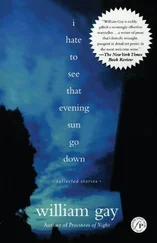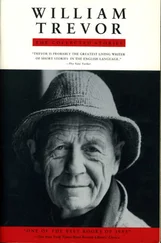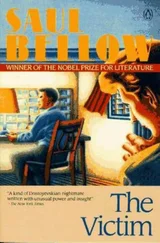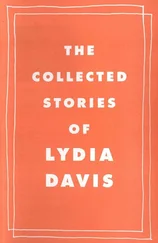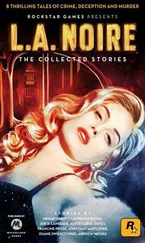Like Dickens, and to some extent like Tolstoy and Proust, Bellow sees humans as the embodiments of a single dominating essence or law of being, and makes repeated reference to his characters’ essences, in a method of leitmotif. As, in Anna Karenina, Stiva Oblonsky always has a smile, and Anna a light step, and Levin a heavy tread, each attribute the accompaniment of a particular temperament, so Max Zetland has his reproving pucker, and Sorella, in “The Bellarosa Connection,” her forceful obesity, and so on. In Seize the Day, probably the finest of Bellow’s shorter works, Tommy Wilhelm sees the great crowds walking in New York and seems to see “in every face the refinement of one particular motive or essence—/ labor, I spend, I strive, I design, I love, I cling, I uphold, I give way, I envy, I long, I scorn, I die, I hide, I want.”
Bellow has written that when we read “the best nineteenth and twentieth-century novelists, we soon realize that they are trying in a variety of ways to establish a definition of human nature,” and his own work, his own way of seeing essential human types, may be added to that grand project.
Bellow’s stories seem to divide into two kinds: long, looseedged stories, which read as if they began life as novels (such as “Cousins”), and short, almost classical tales, which often recount the events of a single day (“Something to Remember Me By,” “A Silver Dish,” “Looking for Mr. Green”). Yet in both types of story the same kind of narrative prose is at work, one that tends toward the recollection of distant events and tends also toward a version of stream of consciousness. Here, the unnamed narrator of “Zetland” recalls Max Zetland, his friend’s father: Max Zetland was a muscular man who weighed two hundred pounds, but these were only scenes—not dangerous. As usual, the morning after, he stood at the bathroom mirror and shaved with his painstaking brass Gillette, made neat his reprehending face, flattened his hair like an American executive, with military brushes. Then, Russian style, he drank his tea through a sugar cube, glancing at the Tribune, and went off to his position in the Loop, more of less in Ordnung. A normal day. Descending the back stairs, a short cut to the El, he looked through the window of the first floor at his Orthodox parents in the kitchen. Grandfather sprayed his bearded mouth with an atomizer—he had asthma. Grandmother made orange-peel candy. Peels dried all winter on the steam radiators. The candy was kept in shoeboxes and served with tea.
Sitting in the El, Max Zetland wet his finger on his tongue to turn the pages of the thick newspaper… Tin pagoda roofs covered the El platforms. Each riser of the long staircase advertised Lydia Pinkham’s Vegetable Compound. Iron loss made young girls pale. Max Zetland himself had a white face, white-jowled, a sarcastic bear, but acceptably pleasant, entering the merchandising palace on Wabash Avenue…
The narrator, who is not related to Max Zetland, is writing about Max Zetland as if he himself had been there, as if he were recalling the daily scene, and he is using a style of writing that Joyce perfected in Ulysses —a jumble of different recollected details, a life-sown prose logging impressions with broken speed, in which the perspective keeps on expanding and contracting, as memory does: at one moment, we see Grandfather caught in a moment of dynamism, spraying his bearded mouth with an atomizer, and then in the next we hear that Grandmother made candy from orange peel and that this peel spent all winter drying on the radiators. At one moment we see the advertisements for Lydia Pinkham’s Vegetable Compound, the next we see Max entering his workplace. The prose moves between different temporalities, between the immediate and the traditional, the shortlived and the longlived. The narrator of “Something to Remember Me By” writes that at home, inside the house, they lived by “an archaic rule; outside, the facts of life.” Bellow’s prose moves in similar ways, between the “archaic” or traditional, and the immediate, dynamic “facts of life.”
Detail feels modern in Bellow because it is so often the remembered impression of a detail, filtered through a consciousness; and yet his details still have an unmodern solidity. At the risk of sounding apocalyptic, one might say that Bellow reprieved realism for a generation, the generation that came after the Second World War, that he held its neck back from the blade of the postmodern; and he did this by revivifying traditional realism with modernist techniques. His prose is densely “realistic,” yet it is hard to find in it any of the usual conventions of realism or even of storytelling. His people do not walk out of the house and into other houses—they are, as it were, tipped from one recalled scene to another—and his characters do not have obviously “dramatic” conversations. It is almost impossible to find in these stories sentences along the lines of “He put down his drink and left the room.” These are at once traditional and very untraditional stories, both “archaic” and radical.
Curiously enough, the stream of consciousness, for all its reputation as the great accelerator of description, actually slows down realism, asks it to dawdle over tiny remembrances, tiny details and lusters, to circle and return. The stream of consciousness is properly the ally of the short story, of the anecdote, the fragment—and it is no surprise that the short story and the stream of consciousness appear in strength in literature at about the same time, toward the end of the nineteenth century: in Hamsun and in Chekhov, and a little later in Bely and Babel.
At home, inside the house, an archaic rule; outside, the facts of life.” This is the axis on which many of these stories run, both at the level of the shifting prose and at the larger level of meaning. For most of the heroes and narrators of these stories, Chicago, where “the facts of life” reign, exists as both torment and spur. Chicago is American, modern; but life at home, as for Max Zetland, is traditional, “archaic,” respectably Jewish, with memories and habits of Russian life. (Bellow was nearly born in Russia, of course; his father came from there to Lachine, Quebec, in 1913, and Bellow was born in June 1915.) In these tales, Bellow returns again and again to the city of his childhood, massive, industrial, peopled, where the El “ran like the bridge of the elect over the damnation of the slums,” a city both brutal and poetic, “blue with winter, brown with evening, crystal with frost.” Chicago, this agglomeration of human fantasies—the protagonist of “Looking for Mr. Green” realizes that the city represents a collective agreement of will—must be reckoned with and recorded as exactly and lyrically as the humans who throng these characters’ memories. But Chicago is also a realm of confusion and vulgarity, a place inimical to the life of the mind and the proper expansion of the imagination. The narrator of “Zetland” remembers that he and young Zetland (Max’s son) would read Keats to each other while rowing on the city lagoon: “Books in Chicago were obtainable. The public library in the twenties had many storefront branches along the car lines. Summers, under flipping gutta-percha fan blades, boys and girls read in the hard chairs. Crimson trolley cars swayed, cowbellied, on the rails. The country went broke in 1929. On the public lagoon, rowing, we read Keats to each other while the weeds bound the oars.”
“While the reeds bound the oars”—Chicago always threatens to entangle the Bellovian character, as also does his family, to stifle him. In these stories, Bellow’s characters are repeatedly tempted by visions of escape—sometimes mystical, sometimes religious, and often Platonic (Platonic in the sense that the real world, the Chicago world, is felt to be not the real world but only a place where the soul is in exile, a place of mere appearances). Woody, in “A Silver Dish” is suffused with the “secret certainty that the goal set for this earth was that it should be filled with good, saturated with it,” and sits and listens religiously to all the Chicago bells ringing on Sunday. Yet the story he recalls is a tale of shameful theft and trickery, an utterly secular story. The narrator of “Him with His Foot in His Mouth,” is attracted by the visions of Swedenborg, and to the idea that “the Divine Spirit” has “withdrawn in our time from the outer, visible world.” Yet his tale is couched as a letter of apology and confession to a peaceful woman he once cruelly insulted. The narrator of “Cousins” admits that he has “never given up the habit of referring all truly important observations to that original self or soul” (referring here to the Platonic idea that man has an original soul from which he has been exiled, and back to which he must again find a path). But again, the spur of his revelations is completely secular—a shameful court case involving a crooked cousin.
Читать дальше



